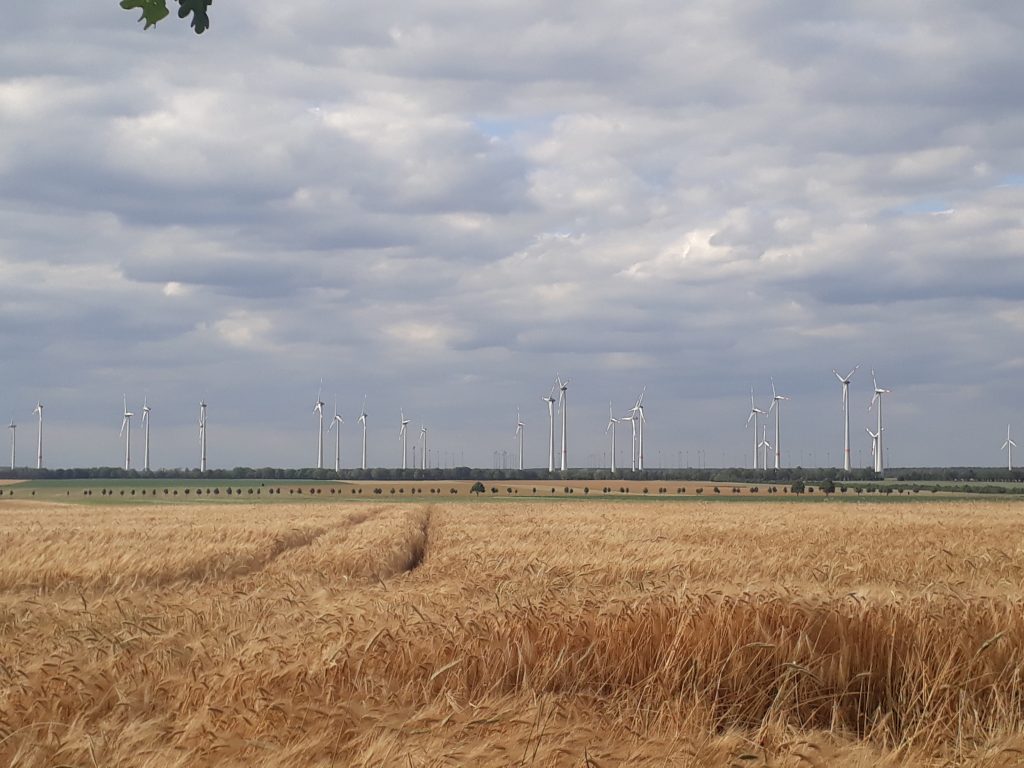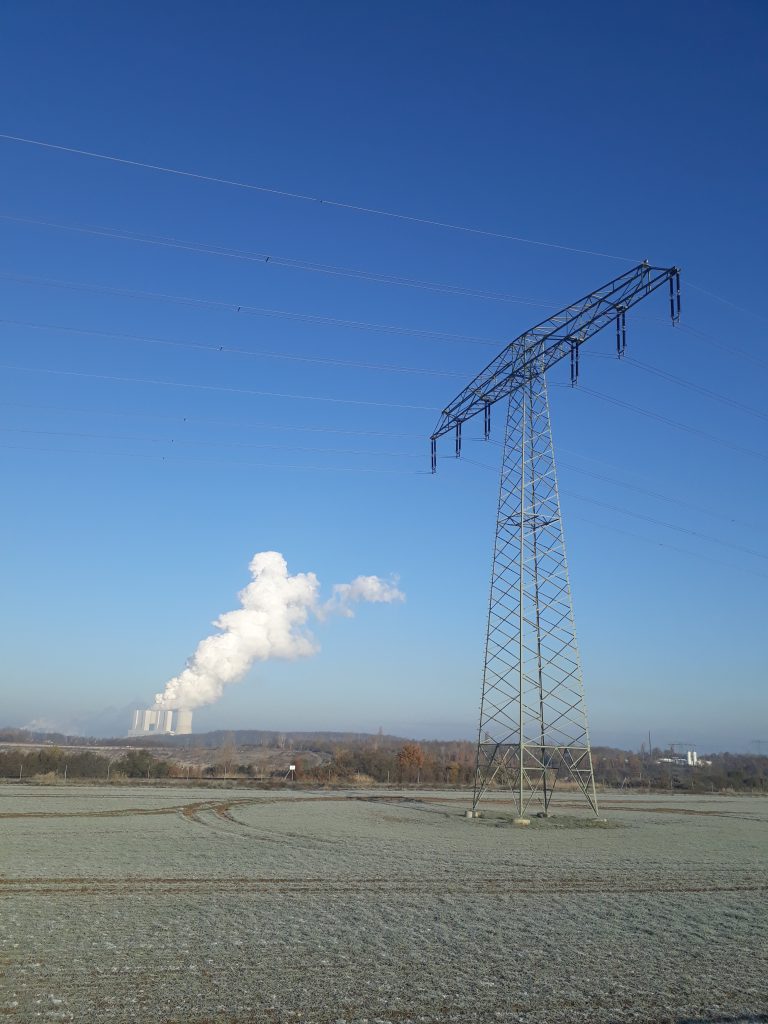
“Energy in Crisis?” – Interview with Katja Müller
Katja Müller is a Heisenberg-Fellow at Merseburg University, co-editor and co-author of the books “Digitisation and Low-Carbon Energy Transitions” (2022) and “Beyond the Coal Rush” (2020).
Which questions about “crisis” and “energy transformations” coming out of the Symposium do you find the most relevant?
The most relevant questions discussed about ‘crisis/crises’ were about its nature: For whom and to what extent is the contemporary energy crisis a ‘crisis’? When Maisarah Kadir discusses with her colleagues from IRENA this ‘so-called crisis you have there in Europe’ or Elizabeth Saleh and her colleagues in Beirut face continuous depreciation of currency and energy cuts, calling the contemporary instabilities on European energy markets a crisis might seem a bit inappropriate. Yet, given consequences such as individual household poverty and industrial production closure, it can surely turn into a crisis for those affected. The interdependence of a globalized energy market not limited to one energy carrier enhances the impact that both the pandemic and the Russian war on Ukraine have on the energy market – but is this an energy crisis? The impact of this market in turmoil is apparently not strong enough (yet) to give clear preference to renewable energy technologies and enhance energy transitions, which is needed to work against the unequivocal crisis the climate is in. It is to be seen if the military conflict and the pandemic can act as factors to fasten the transition, as such exogenous factors alongside endogenous ones of planning, will and involvement have proven to be expedient for transitions, not only in the energy sector.
I’m not sure about the urban and industrial, but what I have taken along is also the question about a communication between the social and the natural sciences, between engineers and social scientists, between words and numbers. There seems to be a great overlap of interests: the urge to see real life effects of numbers gathered at different scales and acted upon, and the need to numerically back and verify impressions and observations. Observations and their scientific analysis should, in my view, go beyond humanities with another theoretical derivative (as much as this might be useful), but needs to come to terms with the truth value of their content as can be (natural) scientifically confirmed. On the other hand, natural sciences can gain from a more nuanced understanding of terms they assemble numeric data about – ideally a win-win situation, to whose advancement the symposium contributed.
If you think further about different methodologies and different scales of observation, how would you describe the impact of the current digitisation tendency on our knowledge of energy transformations? You recently co-edited the book “Digitisation and Low-Carbon Energy Transitions”. How much does this research angle matter for your take on the energy related crises today?
We are currently part of a twin transition of energy transformation and digitisation: both happen beyond the scope of each other (think of digitisation happening to almost all aspects of our daily lives, from buying train tickets to reading news and think of energy transformations as closing down a coal mine), but are also necessarily intertwined: On the one hand, digitisation is linked to energy, because it comes at a cost, an energy cost. Each new digital device in production and application, each online search or block chain requires energy. Digitisation hence needs energy, and the energy saved through digitalisation varies enormously across technologies. For example, drone delivery is not very likely to lower the overall energy demand, but smart thermostats are rather likely to have such an effect. Additionally, we need to take rebound effects into the equation of how much energy we save through digitisation, as people who save money through digitally controlling their heating, might as well increase the temperature for comfort as a response – and hence the energy saved is immediately ‘spent’ again. On the other hand, energy transformation is linked to digitisation, because we decentralize the grid through wind and solar energy production and make the energy system more volatile. For exemplification: a coal fired power plant can generate about 3000 MW, a wind turbine about 5 MW. So you need 600 wind turbines to substitute one power plant – which furthermore was running on stored coal, not fluctuating wind. We hence need digital technology to bundle and regulate fragmented power production and to ensure grid stability.

About 600 wind turbines replace one large coal fired power plant
Digital anthropology and internet studies have been looking into the causes, processes and effects of digitisation for quite some time now, and have shown that digitisation is everything but unproblematic. It is not automatically fostering democratization, but can also open pathways for new hierarchies and power asymmetries (think about who usually programmes software or the court cases against online top dogs). Introducing digitisation to energy systems seems unavoidable when fragmenting energy production through renewables. But it needs to be done in a reflective way, taking knowledge from other digitisation processes into the equation and into decision making.
Intertwining digitisation with energy systems can potentially also abet problems with the energy system: critical infrastructure becomes more vulnerable when connected to the internet for regulating it, and online and digitally controlled forms of buying and selling energy at the stock market bears potential financial risks – which might again be socialized, while profits are privatized. But this needs further investigation and research, and will be my focus for the next few years.
You mentioned the diversity of takes on what the crisis is at the Symposium. And at the same time your fieldwork sites and the interlocutors are quite diverse. Could you say more about how this geographic diversity informs your own take on energy transformations today?
I have conducted ethnographic research in India since 2008 and in East Germany since 2014. My work on energy systems also involves Australian viewpoints, as both the ‘Coal Rush’ project and ‘Decarbonising Electricity’ compare India, Australia and Germany. Comparative research always allows you to see differences between countries, regions or case studies, how developments, histories and trajectories frame contemporary pathways. But it also provides ways of generating generic insights with wider resonance. So, yes, of course, you see that the installation of a solar park in the South Indian state of Karnataka can turn out to be existence-threatening if installed in an area where land owners employ the landless for seasonal agricultural labor plus very small scale informal subsistence cultivation. Means the solar park will generate income for the land owners, but leave the landless in this area all of a sudden without any means of subsistence or income. In Australia, we see a way larger roll out of roof-top solar and an expectation of large-scale renewables to generate jobs (which hardly happens). In East Germany, renewable energy production has as a technology by now turned from niche to regime – with the advantage of potentially a fast roll-out, but the disadvantage of profit-making through financial investments rather than local value creation.
Observing and understanding different ‘energy transformations’, the politics, stakeholders, trajectories, processes and effects of it, allows me to see what is possible and what is lacking, what is ambitious and what’s done inconsiderately. I still think that we are way too laggard in implementing energy transformations the world over in light of the climate crisis we’re headed at – in all the countries. But the conundrum remains: should we accelerate and speed up energy transitions at the expense of energy justice? Or should we aim at and use the opportunity for an (energy) system change that challenges established market systems, ‘natural oligopolies’, and the tendency to privatize profits while socializing risks – at the peril of being too slow?
You were proposing at the Symposium to regard the current energy transformations in the ‘long duree’ perspective, but also talked about the limitations of this approach. Could you say a bit more about how you construct the ‘long duree’ framework?
The discussion at the symposium made me question if the term ‘long duree’ is a good fit for what I was trying to articulate. It has been used in the study of history as a particular approach ascribed to Marc Bloch and Lucien Febvre, to demarcate short-term events, medium-term circumstances and long-term historical structures. With respect to energy transformations, this ‘long duree’ might not be very appropriate, especially if we consider transformations in the energy sector also as the introduction and penetration of singular segments – such as the light bulb, the steam engine, coal combustion, grid systems or smart thermostats. But it makes perfect sense to pay particular attention to time when thinking about energy transformations – as I mentioned above. Are we too slow? Can we be faster? Isn’t a transformation always taking time? Of course transformations can take a lot of time. Coal as a primary source needed five hundred years from the first commercial coal mine to pass the critical threshold of providing 25% of energy generated in the late 19th century. Everyone who has a stake and financial investments in fossil fuel based energy production will do its best to prolong the contemporary transition away from it.
But history has also shown that energy transformations can happen rather rapidly. Examples can be found in energy end-use, prime movers and energy supply: oil and electricity in Kuwait and nuclear power in France, for example, were introduced and crossed a critical threshold in less than 20 years, critical substitution shifts in Brazil, Denmark and Iceland were accomplished in less than 15 years.
So will it really be impossible to displace the world’s fossil-fuel-based system in a decade or two? I don’t know, but the contemporary energy transformation is different from former ones, as it requires us to take a long-time perspective into consideration, too: what Dipesh Chakrabarty has called planetary time. It is no longer a history as produced and shaped by human beings that is at stake, but we are through intensified energy production on the cost of resource extraction and green-house gas emissions at the verge of risking the existence of the whole planet, eradicating human life on earth with all its history, as well as everything the planet comprises beyond and before human existence. And these 4.6 billion years are a really long term – or long duree.
The temporality question is also very interesting when we talk about the decommissioning of energy infrastructures. For instance, nuclear power plants could take several decades to be decommissioned (a longer period than of exploitation), and then certain types of waste require professional management for thousands of years. Still the decommissioning of most of the world’s nuclear fleet is ahead. How would you describe the temporality of coal power plants and mines decommissioning? Can coal infrastructures today be considered a showcase for shutdowns and conversion for the other energy infrastructures too?
For the material infrastructure of coal mining, mine pits and power plants/machines have very different shutdown time frames. Coal fired power plants – when not refitted for gas as an energy source – as well as machines such as diggers or overburden conveyor belts are relatively fast to be decommissioned. Sometimes they are used as signs or monuments of industrial culture, for education, cultural events or touristic purposes. This timeframe for this transformation is not really technically determined but politically – in short, if there is will and money to transform a shutdown coal fired power plant into a museum site, it can be done in a few months.

Coal fired power plant Lippendorf producing electricity and heat
An open cut mine, on the other hand, takes way longer to be “decommissioned” and converted – which by the way is not always done. In Australia, for example, mine sites are often left barren and open after the coal is extracted, leaving nothing but infertile moonscapes – When reapplying the overburden and fertile soil – as is done to the East German mines – it still takes seven years of manuring to get ground that is usable for agriculture. Preparing the ground, stabilizing and flooding the remaining holes takes several years or several decades – and global overall temperature rise does not favor the creation of large surface water bodies. Additionally, we have so called “eternity costs”. For mining, you need to pump down the ground water level, so the pit does not fill with water. Stopping the pumps in the context of decommissioning can not be done quickly – sometimes not at all – if you don’t want to risk unstable grounds or large quantities of soluted contaminants.
In that way this compares to nuclear power plants, especially as regards the question of who has to pay these consequential costs for ‘cleaning up’. We should have the polluter-pays principle in place here, also and especially for long-term effects, but we often find instead a form of privatizing profits while socializing costs.

Open cut lignite mine Jaenschwalde
You mentioned Dipesh Chakrabarty’s notion of “planetary time”. What would be your take on the notion of planetarity and its analytical potential? Is its increasing use a breaking point in understanding society and culture?
Dipesh – who was actually part of our ‘Beyond the Coal Rush’ project – provides crucial historical and postcolonial takes, not only on resource extraction, but with a world history perspective. In my understanding his use of the term planetary (rather than world or global) stresses the consequences of our action on the planet as a functioning system rather than on the way societies function over very long periods of time. It is a way of expanding the historic time frame from human life on earth to earth as such, with or without humans. Or, in other words, a way of taking climate change and global warming into historical equations. It is in a sense a historian’s extrapolation of the concept of the anthropocene. I’m not sure if we can label it a breaking point in understanding society and culture, but it leads to further blurring the line between ‘nature’ and ‘culture’, drawn by Western theory.


